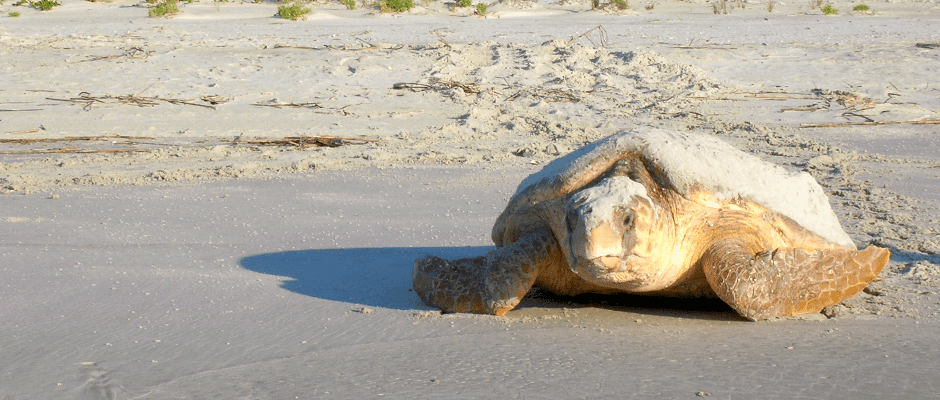Share this article
Magnetic fields mean similar genetics for loggerheads
Endangered loggerhead sea turtles (Caretta caretta) make long journeys around the Atlantic Ocean but always return to the same beaches where they hatched to reproduce. But how do they know where to return? Research points to earth’s magnetic field.
In a new study published in Current Biology, researchers studied this behavior they call “natal homing.” They looked at genetic similarity in turtles nesting in beaches on the East Coast such as in North Carolina and Florida. They collected information on magnetic field marks, geographic location and environmental characteristics to detect which turtles were genetically related.
“Earth’s magnetic field was by far the most important, regardless of other similarities between them,” said J. Roger Brothers, a PhD candidate at the University of North Carolina Chapel Hill and lead author of the study.
This was surprising, Brothers said, since people often think the main drivers in similar population genetic structure are close geographic distance and similar environments. “We don’t see either of those playing a role in the sea turtle genetic structure. Instead, magnetic fields can predict similar or different genetics across regions regardless of if they are far apart or in different environments,” he said.
In fact, loggerheads can be nesting in beaches on opposite coasts of Florida, but have the same magnetic field, and as a result, have the similar genetic compositions.
Brothers suggests taking note of a beach’s magnetic field when attempting to bring loggerheads back to a beach and re-establish nesting for conservation purposes. “Learning about why turtles use nesting beaches can inform those efforts,” he said.
Some things can also impact earth’s magnetic field such as sea walls, power lines and large beachfront buildings, Brothers said, which can in turn affect the turtles. “All sorts of things disrupt magnetic fields — anything that has metal in it or carries an electric current,” he said. “It is important to consider going forward.”
Brothers said the next step is conducting a behavioral experiment to show females using earth’s magnetic field to find their way home. He would also like to study at what point the turtles learn that a certain magnetic signature is home for them.
“Is it when they are hatchlings or inside the egg or something that they learn over the course of their lifetime?” he said. “Or is it something genetically programmed that lets them return to a specific magnetic field? It’s really hard to tackle, but we could really benefit from some creative research.”
Header Image: Loggerhead sea turtle sits on a beach in Cumberland Island National Seashore in Georgia. Loggerheads on opposite coasts of the state but nesting in areas with similar magnetic fields had similar genetics. ©Cumberland Island National Seashore








